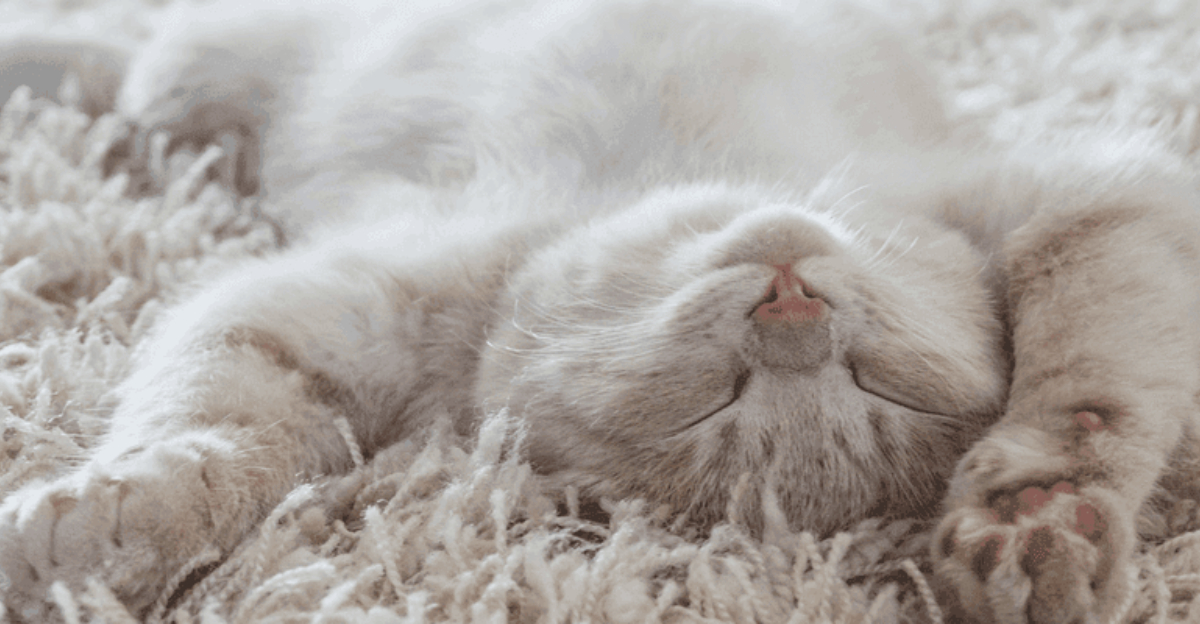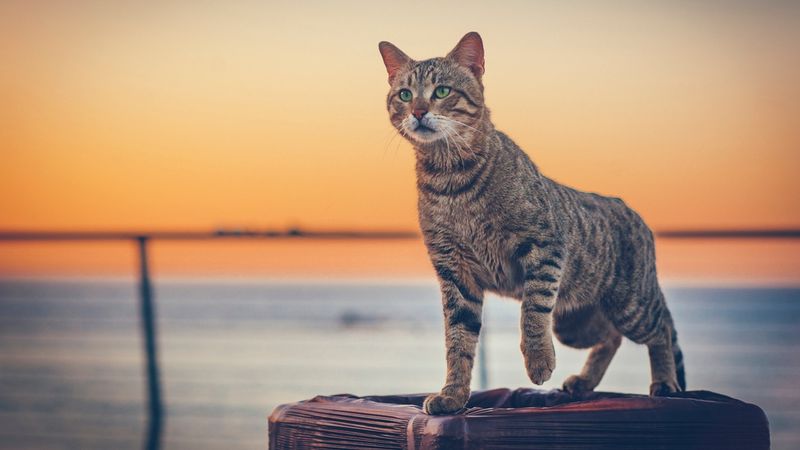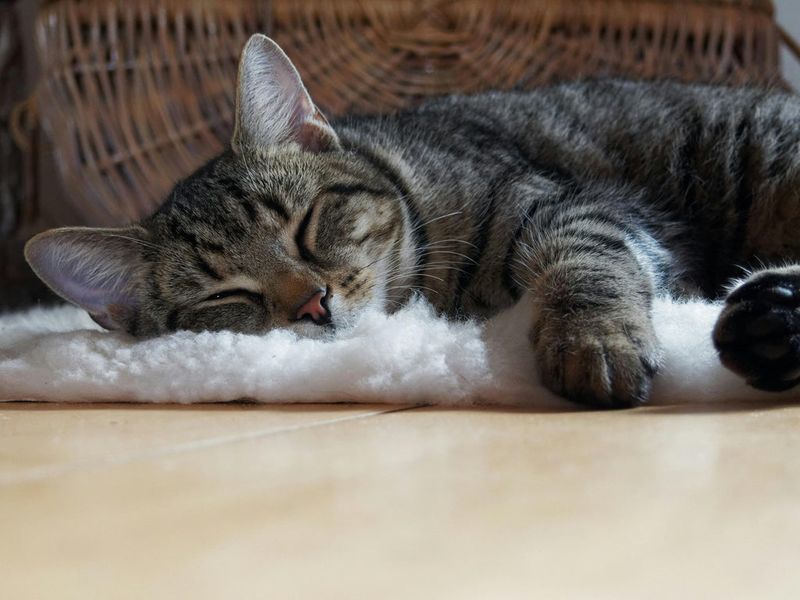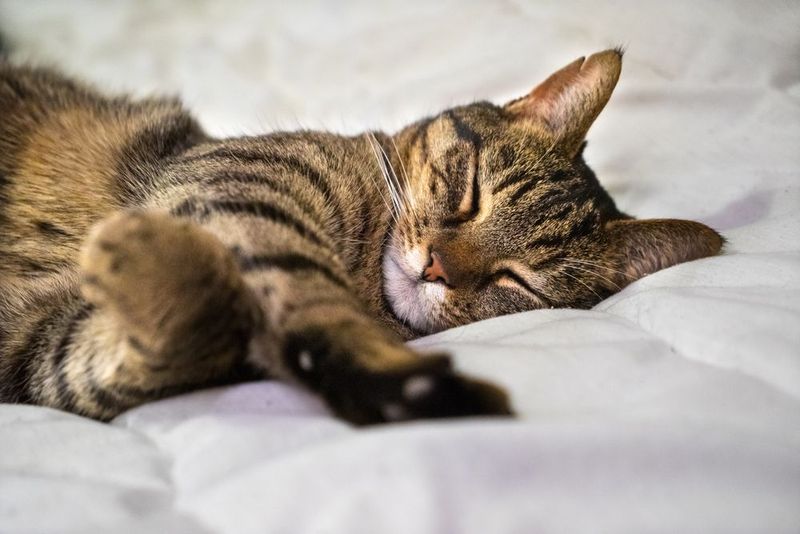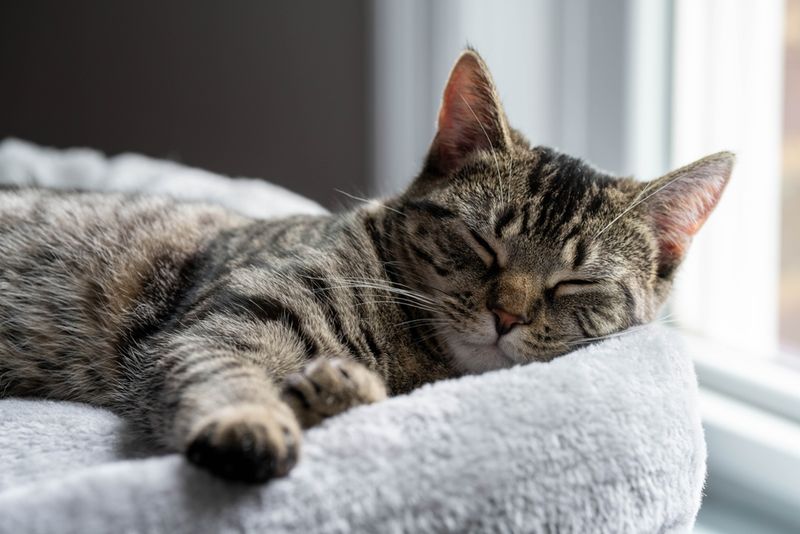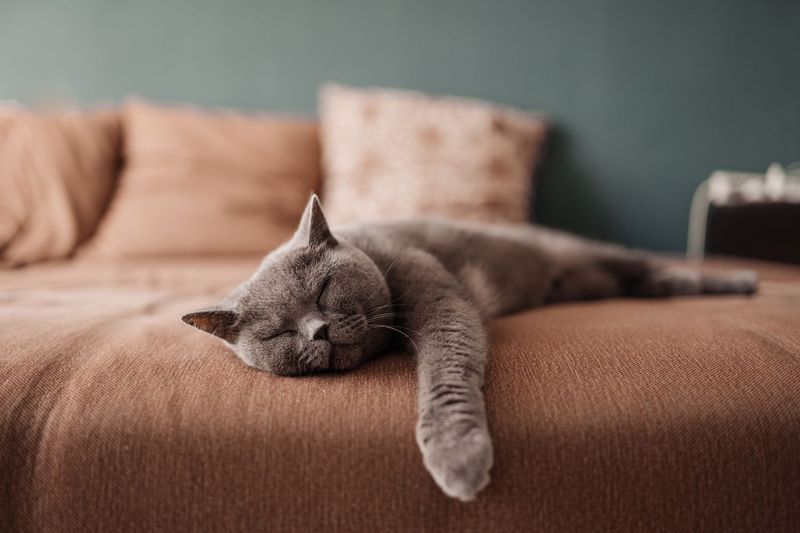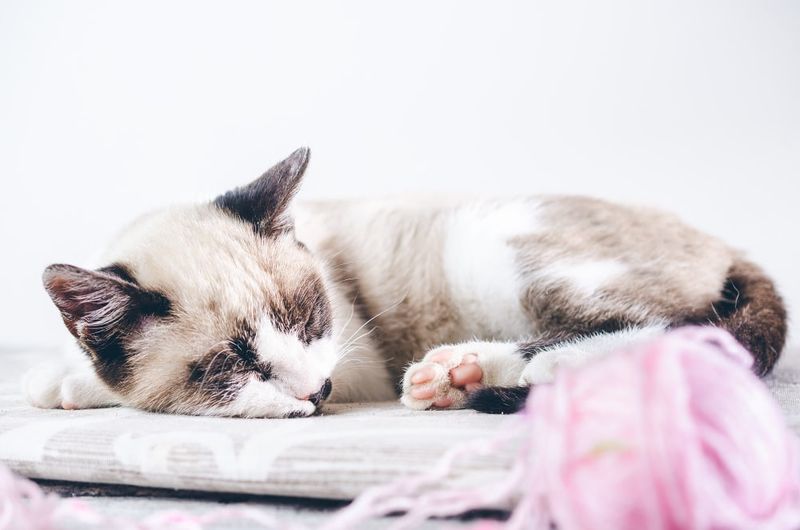📖 Table of Content:
Why do cats sleep so much—and so lightly? In this post, we break down the fascinating world of feline sleep. Learn how your cat’s natural instincts, biology, and evolutionary history shape their unique sleep cycles, and why their rest looks so different from ours. From brief daytime dozes to sudden midnight zoomies, we’ll explore what’s normal, what’s surprising, and how understanding your cat’s sleep can help you bond better and support their health.
1. Crepuscular Nature
Feline sleep behavior is heavily influenced by their crepuscular nature. Cats are most active during the twilight hours of dawn and dusk. This trait traces back to their wild ancestors, who hunted during these times for optimal success. Domestic cats retain this instinctual behavior, leading to their frequent bursts of energy at odd hours. Their crepuscular activity aligns with their instinct to prey on small animals that are also active during these times. This natural inclination can often leave cat owners puzzled over their pet’s seemingly erratic sleep habits.
2. Short Sleep Cycles
Unlike humans, who have longer sleep cycles, cats experience shorter cycles lasting about 22 minutes. Within this brief period, they transition through light sleep and REM sleep quickly. This pattern allows them to be alert and responsive to environmental changes, an evolutionary trait crucial for survival. Rapid transitions between sleep stages enable cats to conserve energy while remaining ready to react to potential threats. Their ability to quickly enter and exit different sleep states is a fascinating aspect of their physiology.
3. Flexible Sleep Duration
Cats possess a unique ability to alter their sleep duration based on their environment and daily activities. On average, a domestic cat sleeps between 12 to 16 hours a day, but this can extend up to 20 hours if conditions allow. This flexibility is a survival mechanism, enabling them to adapt to varying food availability and weather conditions. Unlike humans and many other animals, cats’ sleep is not constrained to a fixed schedule, allowing them to rest intermittently throughout the day.
4. Alert Sleep Behavior
Cats often exhibit alert sleep behavior, allowing them to stay attuned to their surroundings even while asleep. This light sleep phase involves maintaining muscle tone, with their senses, such as hearing and smell, remaining active. This state is an evolutionary adaptation for detecting predators and prey. Despite being in a seemingly restful state, cats are capable of quick awakenings in response to external stimuli. This characteristic is particularly noticeable in feral cats, who must remain vigilant to survive in the wild.
5. REM Sleep and Dreaming
Cats, like humans, experience REM sleep, during which dreaming occurs. This stage occupies about 25% of their sleep time and is characterized by rapid eye movement, twitching, and occasional vocalizations. Dreaming in cats reflects complex brain activity and is thought to play a role in processing experiences and memories. Observing a cat in REM sleep can provide intriguing insights into their mental world, as they might be re-enacting daily activities or engaging in imagined scenarios. This mysterious aspect of feline sleep adds to their enigmatic charm.
6. Diurnal Contrast
Cats’ crepuscular sleep patterns contrast sharply with typical diurnal human activity. While humans operate primarily during daylight hours, cats sleep intermittently throughout the day and night. This difference can sometimes lead to amusing interactions between cats and their owners, as their energetic phases often coincide with human sleep schedules. Understanding this contrast helps in accommodating a cat’s natural rhythms, ensuring a harmonious coexistence. This divergence in sleep patterns highlights the distinct evolutionary paths taken by humans and felines.
7. Evolutionary Adaptations
The sleep patterns of domestic cats are deeply rooted in their evolutionary history. Their ancestors were solitary hunters, relying on stealth and agility to capture prey. These traits have shaped their modern sleep behaviors, emphasizing the need for alertness and adaptability. As a result, cats today maintain an innate ability to adjust their sleep based on environmental cues and resource availability. This evolutionary heritage is a cornerstone of their current behavior and is evident in their instinctive sleeping habits.
